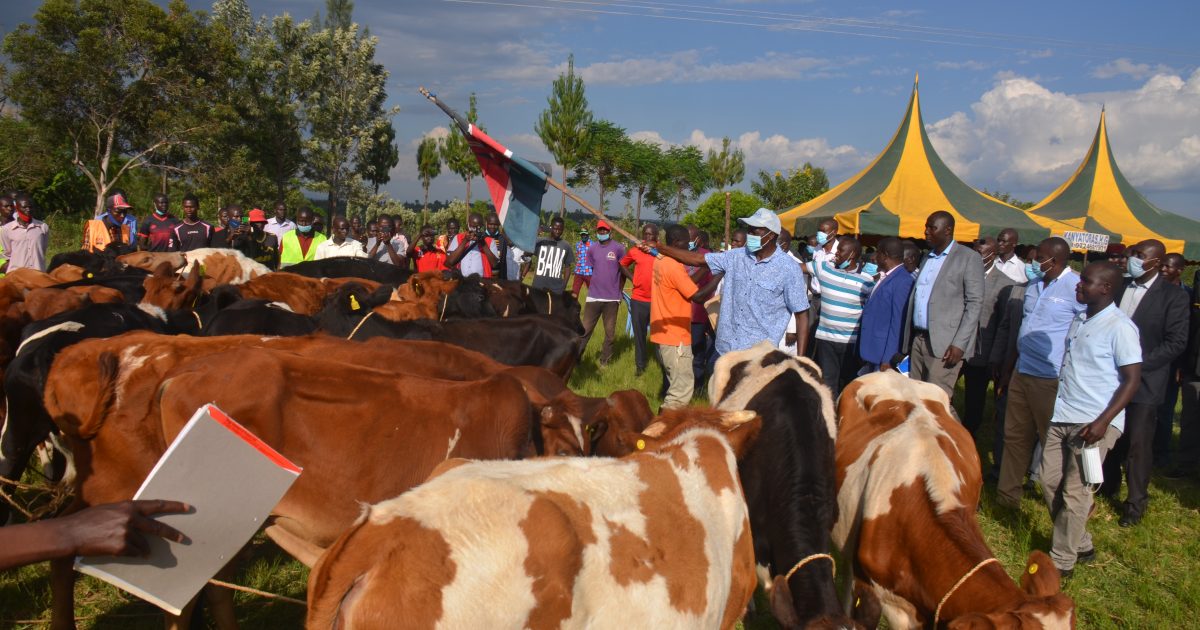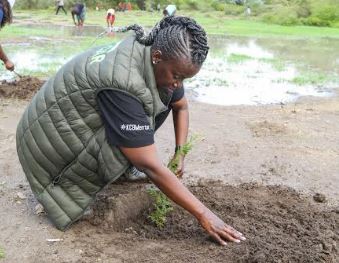The dream to make Migori County improve on the livestock industry and more so on dairy farming has over the years been fast-tracked following the distribution of tens of heifer cows by County Government.
Area Governor Okoth Obado has been in the forefront in encouraging the residents to diversify from keeping the traditional or indigenous cows to the high breed dairy cattle in order to improve on milk yields and income.
In May this year, Governor Obado launched dairy farming in Suna West where 25 heifers were given to Obembo residents to boost the production of high breed cows, milk yields and improved livelihood.
With the devolved government’s plans to allocate Sh600 million for a well thought out project set to be implemented collaboratively with a firm based in Uasin Gishu area – Embryo transfer facility, all indicate how the Migori County leadership is committed to improving the daily industry in the area.
According to Governor Obado the project will not only benefit Migori people but also the whole of the population in Nyanza, Western and North Rift regions.
Serious dairy farming and production has for many years been concentrated in high potential agro-ecological zones where fodder and pastures were available.
Unfortunately, Migori County is not considered as a high agro ecological zone and it was from this reason that the 25 heifers that the Migori County gave the residents were a combination of both pure breeds and cross breeds aimed at improving the genetic survival of the animals.
The Kenya National Bureau of Statistics (KNBS) Livestock Population Census of 2019 showed that the country’s animal population was 18.8 million cattle. Out of 18.8 million, 4.5 million were dairy cows.
The statistics also showed that the per capita consumption of the average Kenyan’s consumption of livestock products was estimated at 121 litres of milk per person per year.
In Migori, milk production is so poor that the region depends solely on supply from Rift Valley, Central Kenya, Nairobi, Kisii and from the far-flung regions of Tarime in Tanzania.
However, since 2014, the county government has spearheaded a campaign to transform the livestock production in the area by assisting farmers with high breed cows and to date, it has distributed over 500 in the ‘one cow per sugarcane/tobacco farmer’ programme.
The programme aims at turning local sugarcane and tobacco farmers into serious dairy farmers after the crops seemed to have taken a diminishing trajectory as a result of unpredictable weather, poor soil and the high cost of production.
Through serious dairy animal farming, the County of Migori will be able to also contain the unnecessary cattle thefts that are witnessed between the Kuria, Maasai, Kipsigis and to a small extent the Luo communities that have been creating tensions in the regions every year.
“We look forward to phase out the traditional cows and replace them with dairy breeds to succeed in stopping cattle thefts and improving milk production in this region,” stressed Obado during one of the many occasions he has presided over the distribution of the dairy animals.
The County Boss underscores that every home should own at least one dairy cow to be able to improve the livelihood of Migori residents through selling of milk products and provide nutrition to family members.
Apart from milk, residents will benefit from cow dung which will act as manure for their crops. Obado notes that the daily cows will benefit the residents directly. “We want to give people power to be able to take control of their lives through farming practices,” he says.
According to the Economic Survey of 2019, the quantities of milk may be affected by the increase of the Kenyan population that is projected to be currently 54,985,698 based on projections of the latest United Nations (UN) data estimates as of July 1, 2021.
Migori residents engage in fish and agricultural farming, bee keeping and mining of gold. But in recent years, the county government has been giving out heifers and dairy cows to residents in every financial year to encourage them to start practicing daily farming for their future benefits.
He urged those that benefited from the project to ensure that they took good care of the cows in order to benefit from livestock products.
By Geoffrey Makokha and George Agimba





